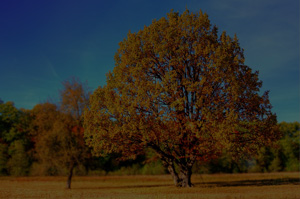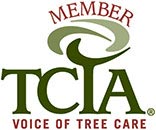Thanks to the work of an acclaimed tree service company or your own work, that large, rotting tree in your yard has finally come down. The debris has been cleaned up and hauled away. The view is more open and there is one less eyesore every time you look out the window. But, a shorter, little less-obvious eyesore remains. The stump.
When a tree is removed there is always that small portion that remains connected to roots and extends deep into the soil. And removing the stump is much more complicated than removing the trunk and limbs. For stump removal, there are some options. Grinding it down or digging it up will remove the last remnants of the tree from the soil. And you won’t have to deal with anything from that tree again. But there is also an option to just bury the  stump.
stump.
Burying A Tree Stump
When a tree stump is buried, the wood will continue to decompose. The slow deterioration of wood within the soil causes changes to the surrounding soil. Over time, these changes can play a significant role--especially to the soil that is directly above the buried stump.
In 1993, buried tree stumps and branches were ultimately blamed for the death of a 7-year-old boy that died when the ground collapsed around him. The boy was standing on the surface near his apartment in New Jersey where he had played for years. Just four feet down, extending down to 18 feet below the surface, was tree debris that crisscrossed back and forth in the soil. Over time, the soil above would fill the air pockets created by decomposing wood, creating a sinkhole that took his life. As a result, many city ordinances now prevent the burying of stumps and tree debris to prevent this type of problem.
Laws on Burying
Tree Stumps Laws covering the disposal of trees and other wood debris vary greatly. Some jurisdictions prohibit the burying of stumps, while others require a permit. Some jurisdictions will require a detailed site plan which must be filed with a local agency. While others allow stump burying with the approval of a state engineer. Legal stump burying should be researched with the local jurisdiction before anything is buried. City administrators will typically be aware of laws (local or State) concerning the burying of stumps.
The enforcement of these laws is difficult. Finding the guilty party of burying a stump is easiest when they are caught in the act. But normally, people are wise enough to bury stumps without the help of law enforcement personnel. Or they just bury stumps not knowing that they are doing anything wrong. Finding the perpetrator many years later when a sinkhole causes damage or takes a life is much more difficult, and sometimes even safeguarded by law. The statute of limitations in each state varies for criminal acts and normally expires within a few years which is typically less time than that of a decaying stump. But if caught, offenders typically face a fine or are told to cease stump burying until proper permissions are obtained.
Other Issues
In addition to sinkholes, buried stumps and tree debris can contribute to other problems. Rotting wood will attract roaches and carpenter ants. Additionally, if the rotting wood contains moisture, foul water will leak into the ground. Which may be a concern for areas near artesian wells or where groundwater is a water source.
The next time you remove a tree and want to bury the stump, think about the ramifications--not only for you but for others. Talk to your local jurisdiction about and laws or ordinances and then make your decision. Burying it might be the best option, or you may just want to remove it altogether.
Related articles you might like:
Why You Should Remove Tree Stumps
Tips for Using a Stump Grinder











